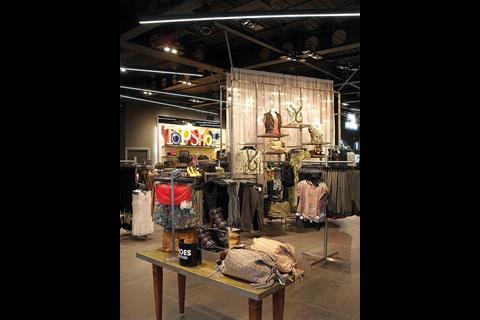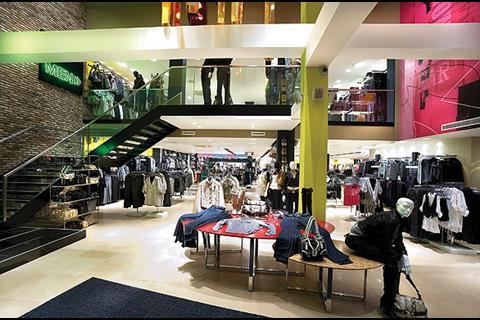What happens when a concept store needs to be rolled out and what needs to be done to keep the spirit of the original, asks John Ryan
About three weeks ago Sainsbury’s unveiled a new format, the eponymously named Sainsbury’s Fresh Kitchen, a concept that offers ready-to-go meals, sandwiches, drinks and snacks. The store is on Fleet Street, more or less bang opposite Goldman Sachs, which should ensure a steady stream of hungry bankers storming the tills, bonus cash at the ready.
The move was certainly interesting, if only for the thought of what will happen next. There are few large retailers that open a new store with a completely different offer from that for which they are normally known, unless there is an underlying intention to open a lot more of them. And the point is that when this happens, in an ideal world it would be a matter of pressing the roll-out button and new shops would begin appearing in high streets across the land.
The trouble is that more often than not an inappropriately large amount of money may have been spent on the prototype store and replicating it in anything like the original form may prove problematic if budgets are to be adhered to. Enter the value engineers, those whose job it is to take an original and make it suitable for the mass market.
At its crudest, this can mean little more than stripping - stripping out everything that made a new concept interesting and replacing this with lower specification materials and finishes, to the point where little of the spirit of the original remains.
However, it doesn’t have to be like this and as Twelve Studio creative director Bill Cumming comments: “An awful lot of people who do value engineering do it in the wrong place.
You should actually do this before you start a project. The aim should be to design the value in, not engineer it out and you can’t do this if you what you’re doing is cost engineering, rather than value engineering.”
Cumming observes that some of the best examples of value engineering can be found not among true retail formats but in the food service arena: “It used to be that if you wanted to understand roll-out you’d go and look at McDonald’s.” He also makes the point that for some retailers the term roll-out will be a matter of perhaps five stores, while for others it may be 1,000 stores and that the skills are “demonstrably different” depending on the point of reference.
Early doors
Jeff Kindleysides, managing director at Checkland Kindleysides, which has dealt with Levi’s and Timberland roll-outs, among others, says that planning for a roll-out has to be undertaken early on in the store design process: “Typically, there’s an acceptance that you’ve got to have a melding of the functional and the aesthetic and you do have to use your imagination to create a concept that can be made mass-market. Clearly, you’re not going to make something that is bespoke in terms of materials if you just can’t roll it out.
“If you’ve used materials that are ‘real’, such as glass, metal or wood, they are generally going to be the first port of call for cost examination when it comes to roll-out. If you take too much of this out, however, things will look terrible. Some things you just can’t fake.”
He cites All Saints as an example of a brand that has kept its “integrity” in the stores that it has rolled out, all of which echo the original format. The roll-out has not been at the expense of the original equipment used, as most of the centre-floor fixturing has been made from cast-iron and wood and there is little room for substitution. The same could be said of the many light fixtures in use in All Saints - these can’t be replicated other than in their original form.
All Saints, however, is something of an exception and its top-end of the mid-market approach to pricing its merchandise goes some way towards explaining how this form of roll-out - which does not involve huge variation from the original - is possible.
But what is the state of play for retailers that wish to translate an original idea into an on-the-ground roll-out and to make it cheaper? Most retailers and designers will be quick to point to a figure of about 25% when referring to the possible cost-reduction that is planned between prototype and roll-out.
Designer matters
David Dalziel, creative director at Dalziel + Pow, which, over the years, has worked on roll-outs with Next, Topshop and River Island says: “Too often clients forget the most important factor of achieving a successful roll-out of a successful pilot. It’s design. No matter what your ambitions - faster, cheaper, simpler - design can help you at every stage. To invest in an idea, in a concept or pilot, and remove design from its practical application can’t be right.” This may sound like a rallying call for design that happens to come from a designer, but Dalziel’s words chime with almost everyone who you talk you about the matter. Roll-out, it would appear, involves design in just the same way as a concept store does.
It also means working alongside quantity surveyors, procurement professionals and the operations department within a retailer. Sometimes, in smaller organisations, several of these functions may be performed by a single individual or by the in-house design and property department, but the same applies. Cumming says that “collaborative teams” of this kind that work on roll-out as well as initial design will make controlling capital expenditure budgets a realistic possibility.
There is also the problem of taking the spirit of a one-off and translating this so that it can be more widely available. Cumming comments: “Mobile phone store roll-outs have tended to be quick, but there’s no emotion. It’s actually easy to roll out fixturing, but not easy to roll out a brand.”
One solution, and one that is adopted by a number of retailers when looking at multiple, less expensive, iterations of an original, is to appoint an expert with a background in shopfitting and quantity surveying to take on the task of controlling the whole process. Bill Fraser, director at V8 - a company that specialises in looking at and leading roll-outs - says that everything from store equipment lifespan to transport, should be considered, ahead of settling on a specific way of starting out.
He notes that beyond the retail sector “lessons might be learnt from the automotive industries, which lay out thousands of pounds on tooling and mould every item”. He is quick to say that while retail is not like this, it is an approach that should be given due consideration if a large-scale roll-out is to be undertaken and it is certainly the preferred modus operandi for large US retailers such as Target and Urban Outfitters.
More often than not, however, this will not be the case and perhaps fashion retailer White Stuff provides an object lesson in roll-out with a human face. Most things that can be seen in one of the retailer’s branches can be observed elsewhere, but the impressive part is that what’s on view looks somehow different from other stores. This is roll-out where consideration is given to a kit of parts and their deployment - it’s a case of the same, but different. Roll-out doesn’t have to mean everything the same, even if it is in fact the case.
The Must-Haves
Plan for roll-out at the initial design stage
Do not over-engineer the palette of materials used in a concept store
Collaborative teamwork will be central to successful roll-out
Allow for the possibility of appointing a roll-out consultant who can take a 360-degree view of the process

































No comments yet